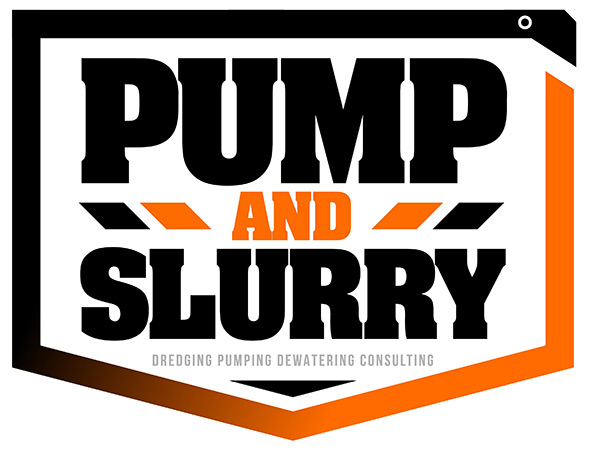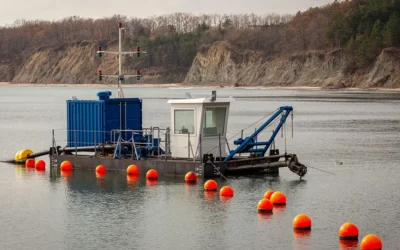Introduction
When it comes to construction, mining, or any industrial project, managing water efficiently is critical. Whether it’s removing groundwater from a site or controlling stormwater, choosing the right type of commercial dewatering pumps are essential to ensure project success. Dewatering pumps are designed to remove unwanted water from construction sites or mining operations, but selecting the right type of pump can be challenging. This blog will compare high-flow versus low-flow commercial dewatering pumps, helping you understand which one is best suited for your specific needs.
Before diving into the comparison, let’s briefly define what commercial dewatering pumps are. These pumps are specifically designed to remove water from areas where excess water could hinder construction or mining activities.
Understanding Commercial Dewatering Pumps
What is Commercial Dewatering?
Commercial dewatering refers to the process of removing water from a construction or mining site to prevent the disruption of operations. It’s an essential part of many industrial projects, especially in areas with high groundwater levels, poor drainage, or frequent rainfall. The goal of commercial dewatering is to maintain a dry and stable work environment for workers and machinery, allowing the project to proceed without delays. Commercial dewatering pumps play a vital role in this process, ensuring that water is effectively removed from the site.
Dewatering can involve various methods, including pumping water out of a site using commercial dewatering pumps. These pumps can be tailored to handle different types of projects, from small-scale construction sites to large industrial operations. Commercial dewatering plays a vital role in ensuring that operations can proceed smoothly, without delays due to excessive water accumulation.
Role of Dewatering Contractors
A dewatering contractor is a professional who specializes in the design, installation, and maintenance of dewatering systems. They assess the conditions of the site, the amount of water that needs to be removed, and the best equipment to use. A skilled dewatering contractor will help you select the appropriate pump for your specific needs, ensuring efficiency and reducing downtime.
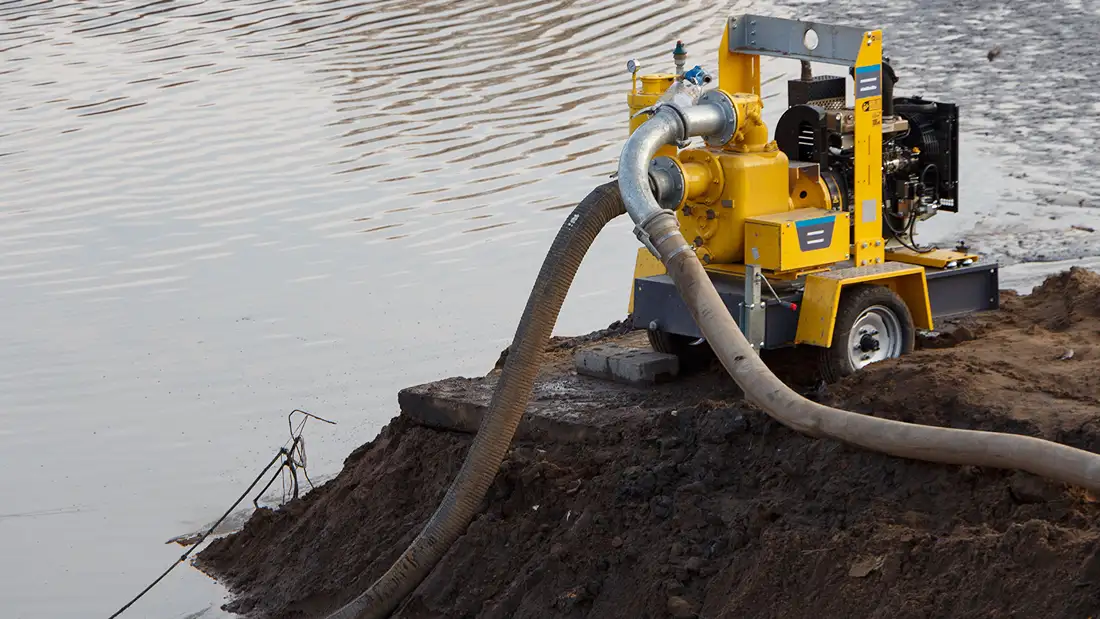
High-Flow Commercial Dewatering Pumps
Definition and Features
High-flow commercial dewatering pumps are designed to handle large volumes of water quickly. These pumps are typically used for large-scale construction projects, mining operations, or flood control systems, where there is a need for fast and efficient water removal. They can remove thousands of gallons per minute (GPM) and are known for their robust performance in demanding environments.
Benefits of High-Flow Pumps
- Efficiency for Large Projects: High-flow commercial dewatering pumps are designed to remove water from large-scale projects at a faster rate. This makes them ideal for situations where time is a crucial factor, such as large construction sites or mining operations where flooding can cause significant delays.
- Higher Capacity: These pumps can handle larger volumes of water, making them the go-to solution for managing water in areas with significant water accumulation or during heavy rain events. Their capacity to pump water at high rates makes them essential for large projects.
- Cost-Effectiveness for Large Sites: Although high-flow pumps tend to be more expensive, they are often more cost-effective for large projects in the long run due to their ability to clear water faster, minimizing project delays and potential damage.

Low-Flow Commercial Dewatering Pumps
Definition and Features
Low-flow commercial dewatering pumps are designed to handle smaller volumes of water. Unlike high-flow pumps, low-flow pumps are built for precision and control, offering slower, more measured removal of water. They are ideal for smaller-scale dewatering operations, such as those found on small construction sites or in confined spaces where water needs to be removed gradually.
Benefits of Low-Flow Pumps
- Precision and Control: Low-flow pumps are perfect for jobs that require precise control over the amount of water being removed. They can be used in delicate environments, such as foundations or trenches, where removing water too quickly could cause structural issues.
- Compact and Portable: Low-flow pumps tend to be smaller and lighter than their high-flow counterparts, making them easier to transport and set up. Their portability makes them an excellent choice for smaller job sites, such as those in urban areas with limited space.
- Cost-Effective for Small Projects: Low-flow pumps are more affordable compared to high-flow models, making them an attractive option for smaller projects that don’t require large amounts of water removal. They also consume less power, reducing overall energy costs.
Challenges or Limitations of Low-Flow Pumps
- Slow Water Removal: Low-flow pumps are not designed to handle large volumes of water quickly. If your project involves dealing with a significant amount of water, low-flow pumps can be inefficient and lead to delays.
- Limited Capacity: For large-scale dewatering needs, low-flow pumps may not be sufficient to clear water in a timely manner. They are better suited for smaller sites or projects with minimal water accumulation.
- Less Suitable for Large Construction Sites: Low-flow pumps are not ideal for large-scale construction projects, as they cannot handle the high water volumes required for such operations. Their output is limited, which could lead to inefficiencies in larger projects.

Comparing High-Flow vs. Low-Flow Commercial Dewatering Pumps
Key Differences Between High-Flow and Low-Flow Commercial Dewatering Pumps
When selecting a commercial dewatering pump, whether it’s for a large-scale construction project or a smaller dewatering task, it’s crucial to understand the key differences between high-flow and low-flow pumps. These two types of pumps vary in terms of flow rate, energy consumption, cost, and suitability for different applications. Here, we’ll explore these differences in detail to help you make an informed decision when choosing the right commercial dewatering pumps for your project.
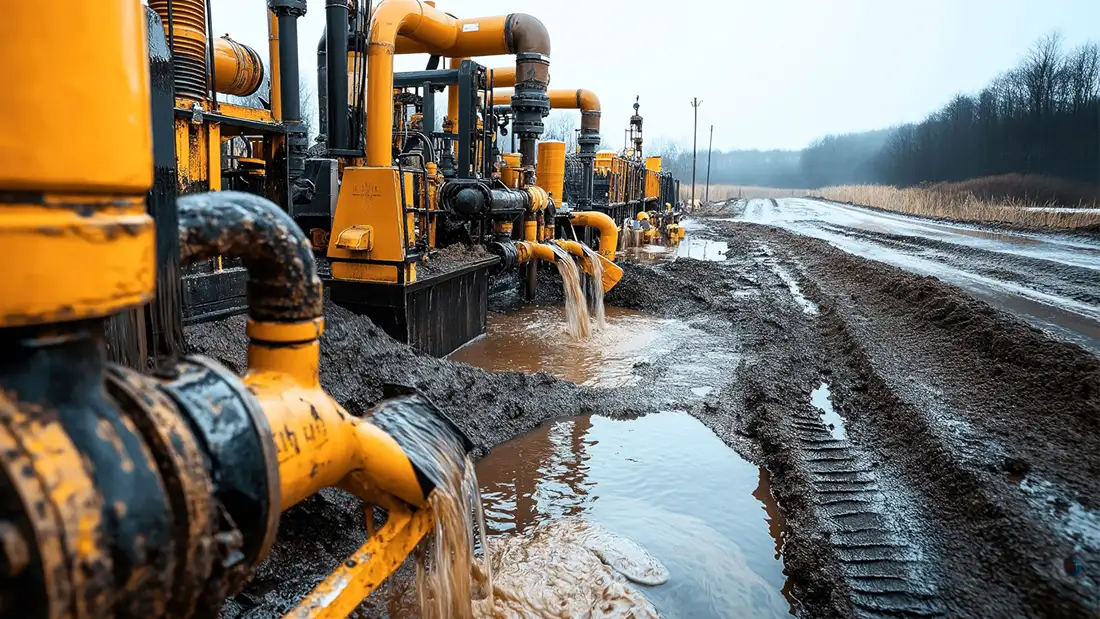
Flow Rate and Capacity
The most fundamental difference between high-flow and low-flow commercial dewatering pumps lies in their flow rates and capacities. High-flow pumps are engineered to handle massive volumes of water, with some models capable of moving thousands of gallons per minute (GPM). These pumps are designed to quickly evacuate large amounts of water, making them ideal for large-scale projects such as construction sites, mining operations, and flood control applications.
On the other hand, low-flow pumps are designed to operate at lower flow rates, typically handling between a few hundred to a few thousand GPM. These pumps are more suited for applications where water removal needs to be controlled or managed over an extended period. Low-flow commercial dewatering pumps are often used on smaller sites, such as residential construction projects, or in confined spaces where high-flow pumps might be impractical. Choosing the right pump depends on the volume of water you need to pump and how quickly you need it removed.
For example, a dewatering contractor might choose a high-flow pump for a massive construction site in a flood-prone area, but opt for a low-flow pump for a small trench dewatering job that requires precision and careful water removal.
Energy Efficiency
Energy consumption is another important consideration when choosing between high-flow and low-flow commercial dewatering pumps. High-flow pumps are powerful machines, but this power comes at the cost of higher energy consumption. Due to their larger capacity and faster water removal rates, high-flow pumps require more energy to operate efficiently.
However, if you’re working on a project with long-term dewatering needs, such as keeping a construction site dry for several weeks or months, low-flow pumps may be a more energy-efficient option. Low-flow commercial dewatering pumps generally consume less power because they are smaller and have lower operational demands.
A dewatering contractor might suggest a low-flow pump for projects with limited water volumes or for sites where energy efficiency is a priority, helping to lower operational costs.
Cost Considerations
Cost is always an important factor when selecting commercial dewatering pumps. High-flow pumps, due to their larger size and higher capacity, typically come with a higher upfront cost. Additionally, they often require more maintenance and servicing to ensure optimal performance over time. However, for large projects, the initial investment can be cost-effective due to the pump’s higher capacity. High-flow pumps can handle significant amounts of water quickly, which reduces project timelines and minimizes delays. For large-scale operations, this increased efficiency justifies the initial cost and long-term maintenance expenses.
In contrast, low-flow pumps are generally more affordable upfront. Their smaller size and lower operational requirements mean that they cost less to purchase and maintain. However, the cost-effectiveness of low-flow pumps can be offset by the amount of time required to complete dewatering tasks on larger sites. If the project involves large volumes of water, a low-flow pump may need to operate for extended periods, which can result in inefficiencies and higher overall costs.
Dewatering contractors typically recommend high-flow pumps for larger-scale projects where speed is essential, and low-flow pumps for smaller tasks that don’t require rapid dewatering but need to be done more precisely and cost-effectively in the long run.
Suitability for Applications
The suitability of high-flow vs. low-flow commercial dewatering pumps largely depends on the specific requirements of the project. High-flow pumps are best suited for large construction sites, mining operations, and flood control systems where rapid water removal is essential. These pumps can quickly clear out excess water, preventing delays and damage to the site. Their ability to move large volumes of water at a fast pace makes them invaluable for high-pressure situations where time is of the essence.
A dewatering contractor will assess the scope of your project and determine whether a high-flow or low-flow pump is more appropriate based on the site’s needs, water volume, and available space.
When to Choose Each Type
The decision of whether to go for high-flow or low-flow commercial dewatering pumps ultimately depends on the scope of the project, the volume of water to be removed, and the available space for the pump. Both high-flow and low-flow commercial dewatering pumps are designed to perform specific tasks, and understanding their differences can help determine which is the right choice for your needs.
If you’re working on a large-scale construction project, mining operation, or flood management situation where water volume is significant, high-flow commercial dewatering pumps will ensure efficiency and minimize delays. These pumps can handle large quantities of water, which is crucial for large projects with high water accumulation. When rapid dewatering is necessary to prevent water from affecting the work environment, high-flow commercial dewatering pumps are the ideal solution. They can remove thousands of gallons of water per minute, making them essential for large construction sites or mining sites with considerable water challenges. A high-flow commercial dewatering pumps help maintain a smooth project timeline by preventing water-related setbacks.
However, if you’re working in a smaller space or dealing with a project where water removal must be done slowly and precisely, low-flow commercial dewatering pumps are the better choice. These pumps are specifically designed to manage lower volumes of water at a controlled rate, making them perfect for projects requiring careful water management. For example, if you’re working in a confined space or managing groundwater seepage in a smaller area, low-flow commercial dewatering pumps provide the necessary precision. Additionally, low-flow pumps tend to be more compact and portable, making them well-suited for confined or challenging workspaces.
In some cases, dewatering contractors might use both high-flow and low-flow commercial dewatering pumps on different parts of a site to optimize performance. This approach allows for greater flexibility in handling varying water removal needs across the project. For instance, a dewatering contractor might use high-flow commercial dewatering pumps in areas where significant water removal is required, such as in large open spaces or flood-prone zones. In contrast, low-flow commercial dewatering pumps can be deployed for more delicate operations, such as dewatering specific areas like trenches, foundations, or other confined spaces that require careful water removal. By using both types of commercial dewatering pumps strategically, dewatering contractors can maximize efficiency and ensure that the right equipment is used for the task at hand.
Ultimately, the right choice between high-flow and low-flow commercial dewatering pumps will depend on the unique needs of your project. If rapid, large-scale water removal is necessary, high-flow commercial dewatering pumps are the best option. But if the project requires precise, controlled dewatering in smaller spaces, low-flow pumps are the better choice. Additionally, combining both types of commercial dewatering pumps across the site can optimize performance and efficiency, ensuring that each area is properly dewatered according to its specific needs.
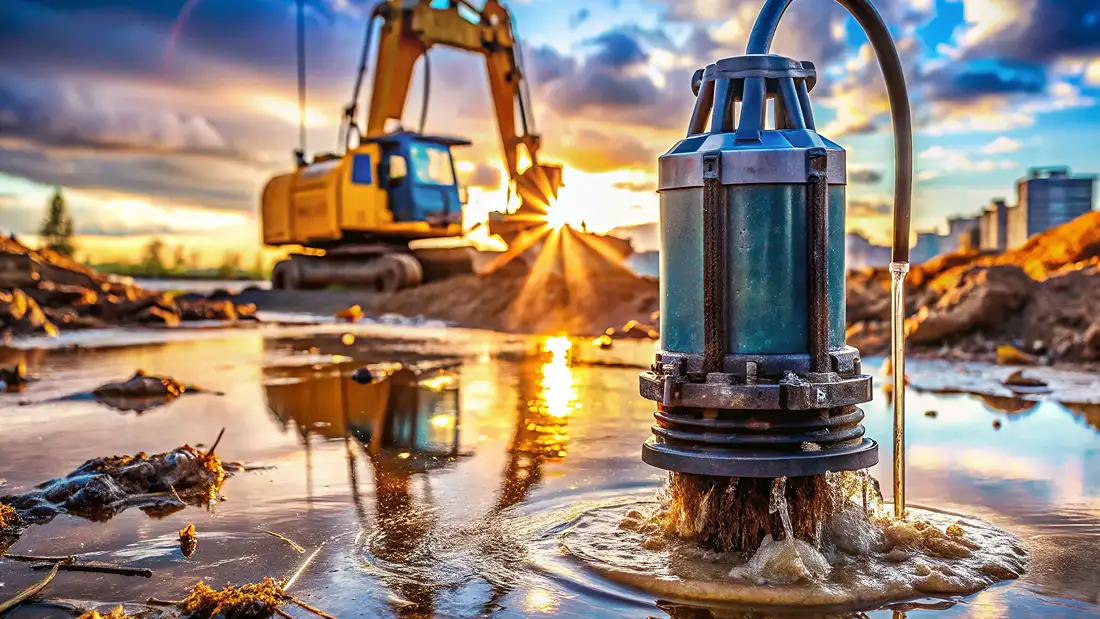
Conclusion
Choosing the right commercial dewatering pumps can make or break the success of a project. High-flow and low-flow pumps each have their own set of advantages and limitations, and understanding these differences will help you make an informed decision. Whether you’re a dewatering contractor or working on a large industrial project, selecting the correct pump type ensures that your dewatering efforts are both efficient and cost-effective.
By understanding the needs of your project and assessing the water volume, flow rate, and operational requirements, you can choose the right commercial dewatering pumps to handle the job. Whether you need a powerful high-flow pump or a precise low-flow model, selecting the right equipment will ensure that your site stays dry, and your project stays on track.




